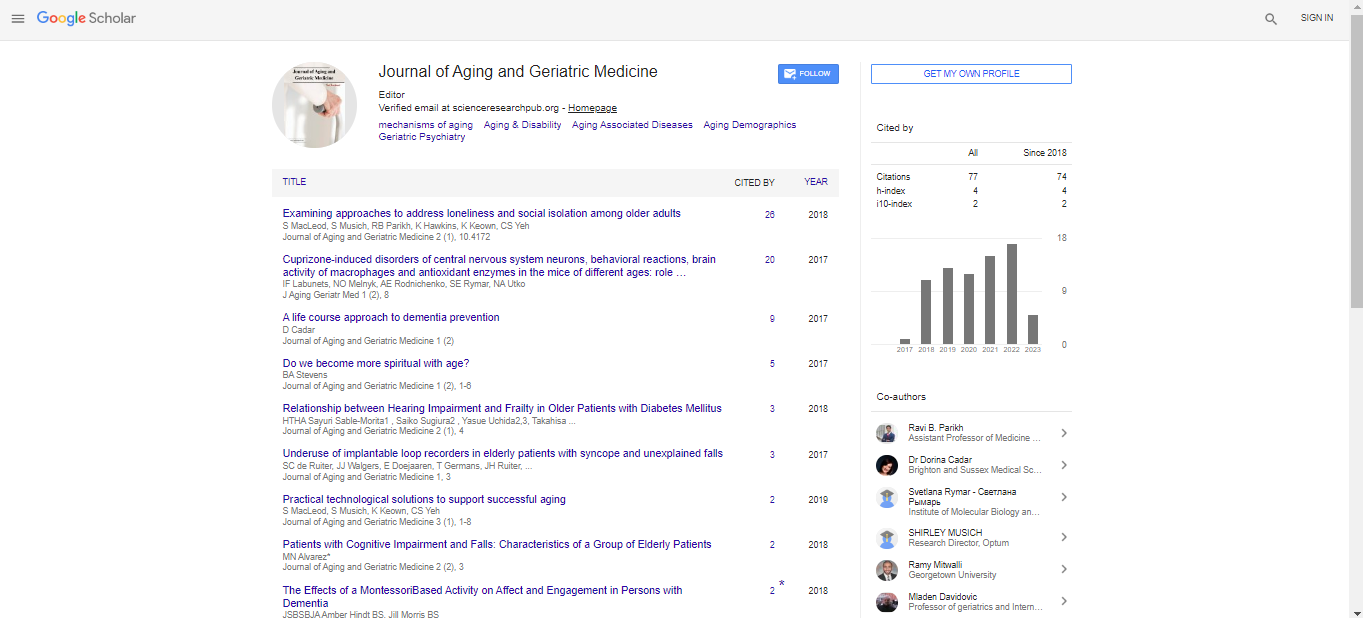Evaluating the effect of external factors on cortical responses in patients with Parkinson's disease: a near-infrared spectroscopy study
Anne Dorothee Roesch
University of Basel, Switzerland
: J Aging Geriatr Med
Abstract
Statement of the Problem: During the Covid pandemic, severe lockdown measures including social distancing were experienced across populations. For elderly, social distancing meant pausing any weekly social routines, which are of indispensable importance to maintain cognitive functioning, general wellbeing and quality of life. In people with progressive neurodegeneration such as in Parkinson’s disease (PD), social distancing may further aggravate their condition due to missing stimulating and motivating human interaction. Therefore we examined the influence of external factors (e.g. amount of hours socializing, sport, age, sex, body weight, the level of education, depression (BDI), cognitive abilities (MoCa) and L-Dopa dosage) on complex problem solving tasks in patients with PD and healthy controls (HC). Methodology: Effects of external factors were examined with general linear models (GLM) on hemodynamic responses (Fig.1) measured during different cognitive problem solving tasks including working memory (WM) and complex language (CL) in 19 non-demented PD patients (Meanage 66.5 yrs [54-75]; 6.2) having no deep brain stimulation (non- DBS) and 18 HC (Meanage 62.8 yrs [52-77]; 7.8). The employed 8x8 functional near-infrared spectroscopy (fNIRS) system integrated short channels and covered fronto- temporal and parieto-occipital cortexes of the brain. Results: In PD, sport (β = .19, p < .02) and hours socializing (β = .15, p < .02) explained greatest proportions of the variance, while education (β = .10, p < .05), age (β = .08, p < .05), depression (β = .07, p < .05) and cognitive abilities (β = .05, p < .05) only took minor influence. For HC, socializing (β = .20, p < .02) was found to be the strongest predictor, followed by sport (β = .18, p < .02), depression (β = .10, p < .05) and cognitive abilities (β = .05, p < .05). Conclusions: Sport and socializing are highly valuable contributing factors to preserve cognitive functioning.
Biography
Anne D. Roesch is a speech-language therapist with expertise in neurocognitive and linguistic research in neurodegenerative disease such as Parkinson’s disease. She currently holds a position as visiting academic/ international researcher at the University of Edinburgh (UK). Her latest research project (conducted in 2020) investigated hemodynamic cortical responses using near-infrared spectroscopy in patients with Parkinson’s disease (PD) and in healthy elderly before, during and after rhythmic interventions. Her work contributes to the current understanding and provides directives for therapy.
 Spanish
Spanish  Chinese
Chinese  Russian
Russian  German
German  French
French  Japanese
Japanese  Portuguese
Portuguese  Hindi
Hindi 